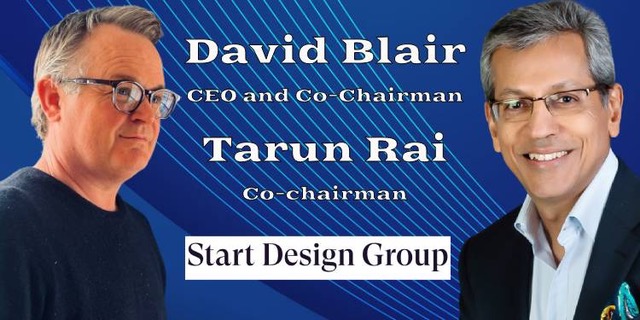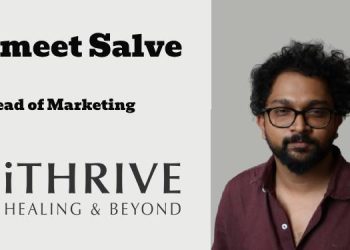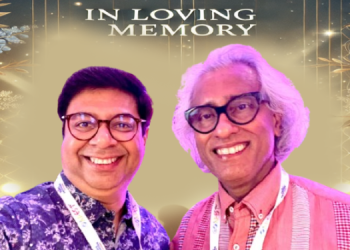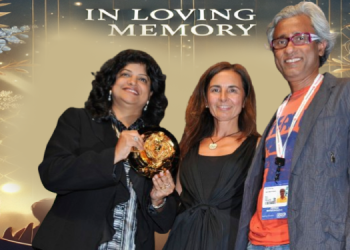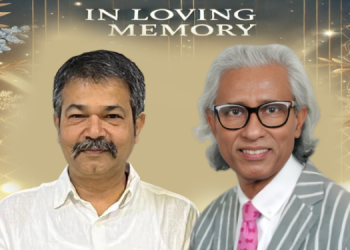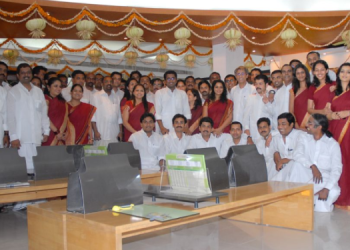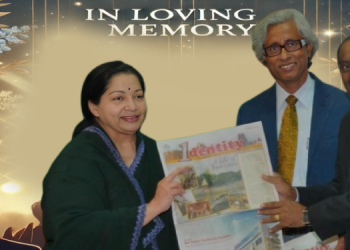London-based branding and design consultancy, Start Design Group, recently announced the appointment of advertising and media stalwart, Tarun Rai, as its co-chairman. With a focus on delivering creative transformation across brand, digital, and experience, the branding and design consultancy is keen to expand its client base in India and South Asia. As a partner for design strategy and execution, Start Design Group will leverage its international design expertise and local understanding, to deliver design experiences for clients in India.
With over three decades of experience in the advertising and media industry, Rai has built Indian brands and shares a rapport with clients that spans decades. After serving as the CEO of Worldwide Media, a joint venture of BBC Worldwide and The Times of India, Tarun re-joined JWT in 2015 as its CEO for South Asia. He was made Chairman and Group CEO when JWT merged with Wunderman to form Wunderman Thompson (now VML). After a successful stint in South Asia, he was tasked with the responsibility for the APAC region, covering seventeen countries, as Executive Director.
Medianews4u.com caught up with Rai and with David Blair, CEO and Co-Chairman of Start Design Group to find out more:
What goals has Start Design Group set for the year in terms of client roster growth, revenue, and profitability?
David: Our ambition is to partner a number of key clients, and establish our credentials and the Start Design Group brand in India and South Asia. We have proved throughout our 28 years that our work delivers longevity, drives customer loyalty and increases sales for our clients, and we look forward to demonstrating that in India.
Tarun: Our primary objective is to introduce Start Design Group to clients in India and South Asia and build a reputation. The rest will follow. The opportunities in the Indian market are huge. This is an exciting time to be in India.
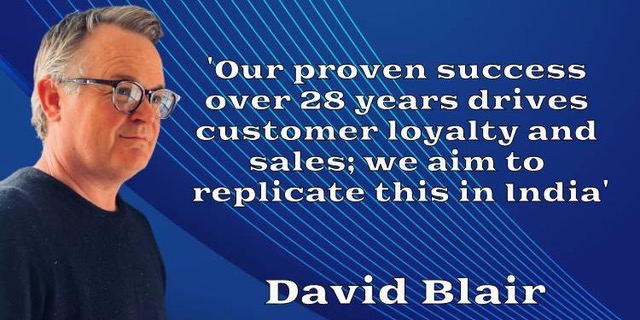
What is the gameplan to get there?
David: Nothing beats hard work and networking. Both of us know the market well and have good contacts. Re-engaging with them, both clients and talent, will be key, as well as delivering high-quality work that will keep us front of mind for prospective clients.
Tarun: SDG is entering the market with an impressive international reputation, having worked with some of the best brands in the world. Coupled with the fact that David knows the Indian market well makes for an attractive proposition for clients here – international talent plus local understanding.
From what I understand many Indian companies don’t understand the importance of brand and design. How do you overcome this challenge?
David: When I first moved to India in 2006 it was certainly true that many clients didn’t understand what design could do for them, although I think most understood the value of design as a concept. Now I think most companies have a good understanding of the importance of design and how it can benefit their businesses. However, not all design is equal. Good design is hugely valuable, as proven by the likes of Virgin, Apple, and Dyson for many years. On the other hand, bad design that results in a poor customer experience can be hugely detrimental.
Tarun: Design has become even more important in the last couple of decades. As brands engage with their consumers across multiple platforms being distinctive and consistent is key. Yes, understanding of brands and design is not the same across companies. Some of the new start-ups can certainly do with advice on how to maximise their spends through better design.
What are the similarities and differences between India and other markets?
David: The same thing I learned back in 2006 remains true; India is modern but not Western. This means that while bringing the best talent from around the world and having a deep understanding of the most up-to-date technology is critical, so is having a deep understanding of the market and culture you are operating in. There are many differences between India and other markets, and this will make what we do in India unique. But there are also many underlying similarities, for example, people the world over value good design, exceptional quality, and outstanding service, and this is what we deliver wherever we operate globally.
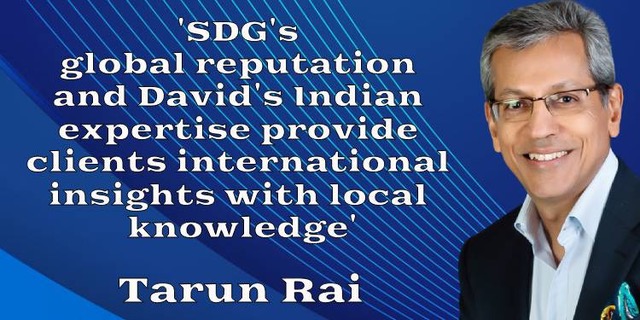
What factors must be considered to create world-class branding and design work?
David: Anything is possible with smart thinkers, great designers, a good brief, and an engaged and emphatic client. These things together will create world-class branding and design every time.
Tarun: Indian companies recognise that their consumers are much more exposed to the world, today. Their expectations of the brands they interact with are, therefore, much higher than earlier. I believe a mix of local and international talent is the need of the hour. SDG has worked with this combination in various markets with excellent results.
Could you shed light on work done recently with clients like Yas Island, and Adidas?
David: The Adidas work we delivered a few years ago was ground-breaking and redefined the way people think about experiential retail. In particular, we designed and implemented the world’s first truly endless aisle. This meant that Adidas could display 10,000+ SKUs in a space where previously they could only display a hundred or so at most. With Yas Island, the challenge was to create a brand that could sit alongside and bond with other globally renowned and powerful brands, like Ferrari World, Warner Bros., and F1, to create an amazing destination under a singular and well-recognised umbrella.
Is the brand and design area all about long-term thinking for companies as opposed to how it can push sales in the next quarter?
David: It can be both. Having a comprehensive brand strategy and a well-designed visual identity or logo is a long-term and vital investment for every organisation and business everywhere. It defines who you are to the world and makes promises that customers can believe in and be loyal to. To us at Start Design Group this is 100% non-negotiable. But that is not where design ends.
All brands need care and attention, and the list of brand assets a business needs, from websites, apps, and social media to print campaigns and brand experiences, can be extensive and is constantly growing and in need of updating. Great brands don’t stand still, they keep evolving while remaining true to themselves, and the principles and values set out in the brand strategy and articulated through brand guidelines.
Tarun: David has articulated this very well. As they say, the long term is made up of a lot of short terms. So, you can’t approach the two differently. Over my three decades of working with brands, I have found this to be a useful reminder. In today’s world, consistent brand language becomes more important due to a plethora of consumer touch-points. This is where good design can help. Good design allows for flexibility and evolution without compromising on its core values. With shorter attention spans and an explosion of content and information a consistent and easily identifiable brand becomes even more important.
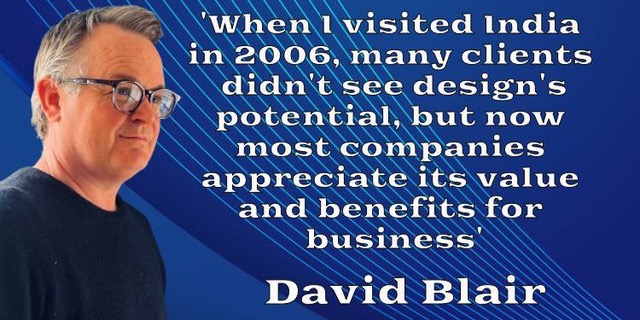
How important is it to do brand design across omnichannel touchpoints?
David: It is very important to be consistent with your branding across the touchpoints that a business requires. However, omnichannel is all-encompassing and endless, and one of the things we at Start Design Group recognise is that not all potential touchpoints are needed by every business. We work with our clients to create customer journeys that help us identify which touchpoints and with what message we need to prioritise in the first instance, and then evaluate other touchpoints that are ‘nice to have’. As well as consistency, great brands allow for some flexibility, for example to allow for localisation or when communicating with specific demographics, and they need to work across everything from large physical spaces, like retail, and tiny digital spaces, like a tile on a smartphone – and everything in between!
Tarun: Being consistent is crucially important for brands that are omnichannel. And almost all brands are omnichannel today. Whether you are walking into a store or buying the same product on-line the experience with the brand needs to be consistent. But consistent with what? Good design helps define that.
What role is A.I. playing in your area? Is it helping you make better-informed decisions faster?
David: AI is increasingly playing a role in branding. It’s making an impact across several areas, from data analysis and insights, personalisation, and content creation to market research and visual recognition. All of this help us to make better decisions, faster and more efficiently. However, we believe it is human experience, expertise, and creativity that play a vital central role in developing compelling brands that build genuinely meaningful connections with customers.
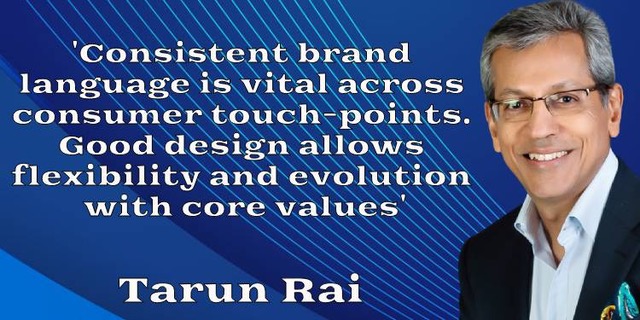
How do you use AR and VR to augment the design experience for companies?
David: AR and VR are valuable tools that have revolutionised the design process for us and our clients. These tools provide new capabilities for visualisation and prototyping. For example, when we’re designing a new physical experience, we can create a virtual version, iterating and testing, before applying it to the real world.
Is Start Design Group looking at acquisitions? If so what would be the consideration?
David: We are always on the lookout for great talent and that could include acquisitions. In particular, we are interested in exploring opportunities that would broaden our expertise in areas that would make our offer even more valuable to our clients and the amazing work we already do with them.

